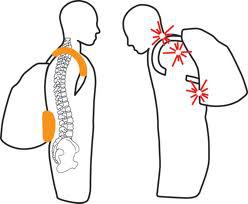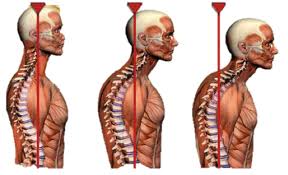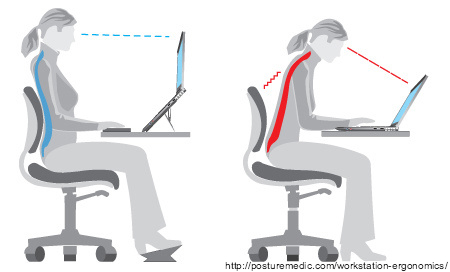Avoiding Smartphone Injuries
In our never disconnected life, the over use of technology can cause repetitive stress injuries. Carpal tunnel syndrome is well known and affects millions of workers across all industries, but did you know that there’s a whole list of injuries that can come from using a smartphone?
Smart Phone Thumb
Problem: Compulsive smartphone use may result in a dull discomfort that originates in the wrist or thumb, especially when bending or straightening. “Phone thumb” is usually a result of awkwardly typing on a small keyboard for hours on end.
Tip: Secure your smartphone with one hand, type with the other, using your index finger. Don’t write massive amounts. Instead, make text talk your friend, with short, concise messages. If possible, use Swype or equivalent apps that enter the words for you. When pain appears, reduce inflammation immediately with ice packs. Daily stretching is also recommended.
Cell Phone Elbow
Problem: Holding a phone up to your ear on a constant basis can result in tingling or numbness in the little finger. In worst case scenarios, weakness in the entire hand can occur.
Tip: Use speakerphone and hands-free devices as often as possible. If neither option is feasible, switch hands frequently during long conversations.
Rounded Shoulders/Neck Forward
Problem: When making use of a personal device people are leaning forward excessively. This is causing individuals to be rounded at the shoulders and their head/neck being forward.
Tip: Try to sit straight up with your shoulders back when using a personal device.
Laptop Use
Laptops are being used at a greater frequency and duration within class rooms, in homes and when ravelling. Laptops can cause an individual to have many different injuries due to the laptop onfiguration and the way in which we sit to make use of it. You can prevent these issues and feel better after making use of it!
If you are sitting on a couch and using a laptop you should purchase a laptop desk to put it on. This will How you to have the laptop on your lap and you can lean back properly. When leaning back the neck and back are in less aggravated position. Too often we sit forward and aggravate our back, neck and arms doing this. Also you should use an external mouse and place it on the laptop desk.
Laptops should not be used at a table without the use of an external keyboard and mouse. If you use a laptop on a table/desk you are raising your shoulders too high and this will create tension in the neck, shoulders, upper back, forearms and wrists.
Please try to avoid placing a greater amount of tension/force on your body as you will feel better and be more productive when you work!
Any questions: feel free to ask Dr. Barbara Rodwin!
How serious of an injury is texting thumb?
To date most of the injuries have been pain, soreness, and discomfort reported with thumbs, wrists, shoulders and the neck. The most serious cases reported are severe tendinitis, with pain sometimes reaching levels that prevent people from maintaining thumb-intensive tasks. Most cases, however, report low levels of pain symptoms. The best study examining such injuries completed in Canada suggests that longer duration of texting increases the likeliness of reporting pain at the base of the thumb. This can be treated!
Backpack Ergonomics: Pack it light, wear it right
A heavy backpack can injure the back, neck, and shoulders causing numbness in the arms and reducing blood flow to the surrounding muscles and tissues. They also create poor posture by encouraging the carrier to lean forward and round their shoulder, which reduce the ability to maintain balance and restricts movement.

To prevent back and neck pain from an overloaded backpack it is important to know the correct way to choose, pack, and carry a backpack.
1. Choose a backpack that is proportionate to
2. The shoulder straps should be at least two inches wide, adjustable, and padded. Poorly designed shoulder straps can dig deep into muscles causing stain and pinched nerves. A backpack should have a padded back for added protection and comfort.
3. A hip strap or waist belt helps to effectively redistribute as much as 50 to 70 percent of the weight off the upper body and onto the pelvis, equalizing the strain on the bones, joints, and muscles.
4. Choose a backpack that has several individual pockets instead of one large compartment. This will help to distribute the weight evenly and keep contents from shifting.
Packing your backpack
1. Backpacks should never exceed 15 percent of your body weight (i.e. a 90 pound child should not carry more than 14 pounds in a backpack). For elementary school children try to keep the weight in their packs below 10 percent of their body weight.
2. Ensure the weight is evenly distributed in the backpack.
3. Pack the heaviest items closest to the body as this reduces strain as weight is closer to the center of gravity of the body. Do not overload the backpack and only carry items that are needed. Pack odd shaped items on the outside so they do not dig into your back or side.
4. your body size. The top of the backpack should not extend higher than the top of the 5. shoulders, and the bottom should not fall below the top of the hipbone
Carrying your backpack
1. Wear both shoulder straps at the same time and adjust them so the pack fits snugly to the body. Be sure it does not dangle loosely to the side. You should be able to slide your hand between the backpack and your back. This positioning will reduce strain on your back, shoulders, and neck.
2. Using the hip strap or waist belt reduces strain on your back and transfers some of the load to your hips and pelvis.
3. A backpack that is too low will cause you to lean forward and carry the full weight on the upper back.




